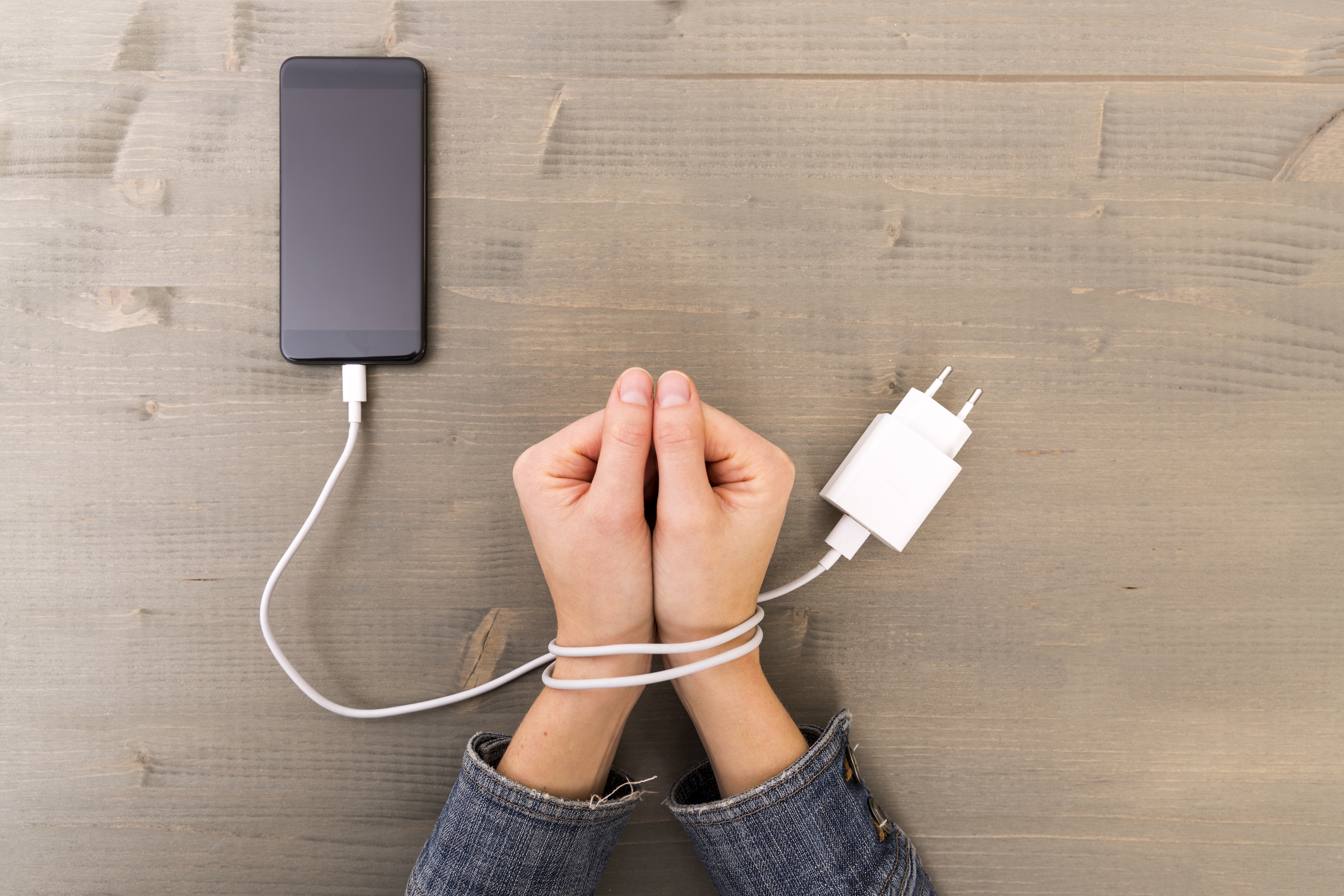Welcome to our special section, Thrive on Campus, devoted to covering the urgent issue of mental health among college and university students from all angles. If you are a college student, we invite you to apply to be an Editor-at-Large, or to simply contribute (please tag your pieces ThriveOnCampus). We welcome faculty, clinicians, and graduates to contribute as well. Read more here.
I never realized just how much digital media dominated my life until I was asked to give it up — and to keep track of every single time I engaged with it. This was intended to give me a deeper understanding of my habits, decision-making, and ultimately my relationship with technology. That’s what my professor told me, anyway.
One of my very first assignments when I was a freshman in college was to go cold turkey with tech and digital media, or keep a journal detailing the when, where, and why of my usage — whether it was sending a text, reading an ebook, or watching an episode of Netflix. I remember the looks of panic and concern washing over my classmates’ faces when our professor specified the guidelines and told us to choose carefully. Although neither options sounded ideal to me, I thought there was an obvious choice. So I found an old notebook and immediately realized I already needed to jot down my first journal entry — a moment prior I had just unlocked my phone to check the time and weather.
Off to a strong start, I thought to myself. Maybe this wasn’t going to be as easy as I expected.
The journaling exercise taught me a lot about myself and how much I rely on technology, both for purposeful activities as well as nonsensical things. I found that I often reached for my phone when I was bored, in awkward social situations, or when I was running errands by myself and wanted to feel less alone. I realized the degree to which my phone was a tool, too, like when I used it as my alarm clock, notepad, and GPS, among other things. Most of all, I noticed how many hours I spent staring at my computer screen each day doing homework and keeping up with friends on social media sites.
I quickly became overwhelmed by the length and depth of my journal. By the end of the seven-day trial period, I had clocked over 4,000 “media minutes,” which accounted for roughly 40 percent of my week. A sense of desperation washed over me, and I felt as though I needed to do something to make up for what appeared to be my growing addiction to technology. Instead of devising a strategy to develop a healthier relationship with digital media, I took things to the extreme and decided to give up social media for a full two weeks.
What initially seemed like a step in the right direction actually turned out to be an unrealistic expectation — I course-corrected in the extreme, and it was too fast and impulsive. My decision not only caused me to feel extremely disconnected from my friends and family, but also led me to think about social media more than ever before. I often wondered what my friends were posting, or if I was missing out on something because I hadn’t checked Facebook, Twitter, or any of my social media accounts. Instead of feeling more balanced and less ashamed of my relationship with technology, my personal experiment made me feel desperate in a way I had not experienced before — I wanted and needed to get back online, but had to find a healthier way to incorporate digital media in my everyday life. I was faced with the challenge of both breaking and creating a habit at the same time.
Instead, I course-corrected yet again, and I started small. I decided to stop using my phone an hour before bed and did not touch my phone for at least an hour after waking up. I bought a real alarm clock, so my phone was no longer the last thing I saw at night or the first thing I touched in the morning.
When spending time with friends and family, I decided to keep my laptop and phone out of sight, and made the active choice not to be mad at myself when I couldn’t keep them completely out of mind. By taking small steps and having patience with myself when I fell short, I realized that technology wasn’t the enemy, and neither was I. It was the notion that I needed to be always on or always off that was harmful in the first place.
Nearly four years later, I still find it challenging to maintain a healthy relationship with digital media and technology. Apple’s screen time controls and my own efforts to maintain self-control have made the balancing act a bit easier, but I still have days when I’m not so proud of the minutes spent on my devices. When I have one of those days, I am reminded of my freshman self, and the way I felt when I thought my relationship with technology was out of my control. I am reminded of how far I have come, and that I am in control, as long as I remember to be patient.
Subscribe here for all the latest news on how you can keep Thriving.
More on Mental Health on Campus:
What Campus Mental Health Centers Are Doing to Keep Up With Student Need
If You’re a Student Who’s Struggling With Mental Health, These 7 Tips Will Help
The Hidden Stress of RAs in the Student Mental Health Crisis


